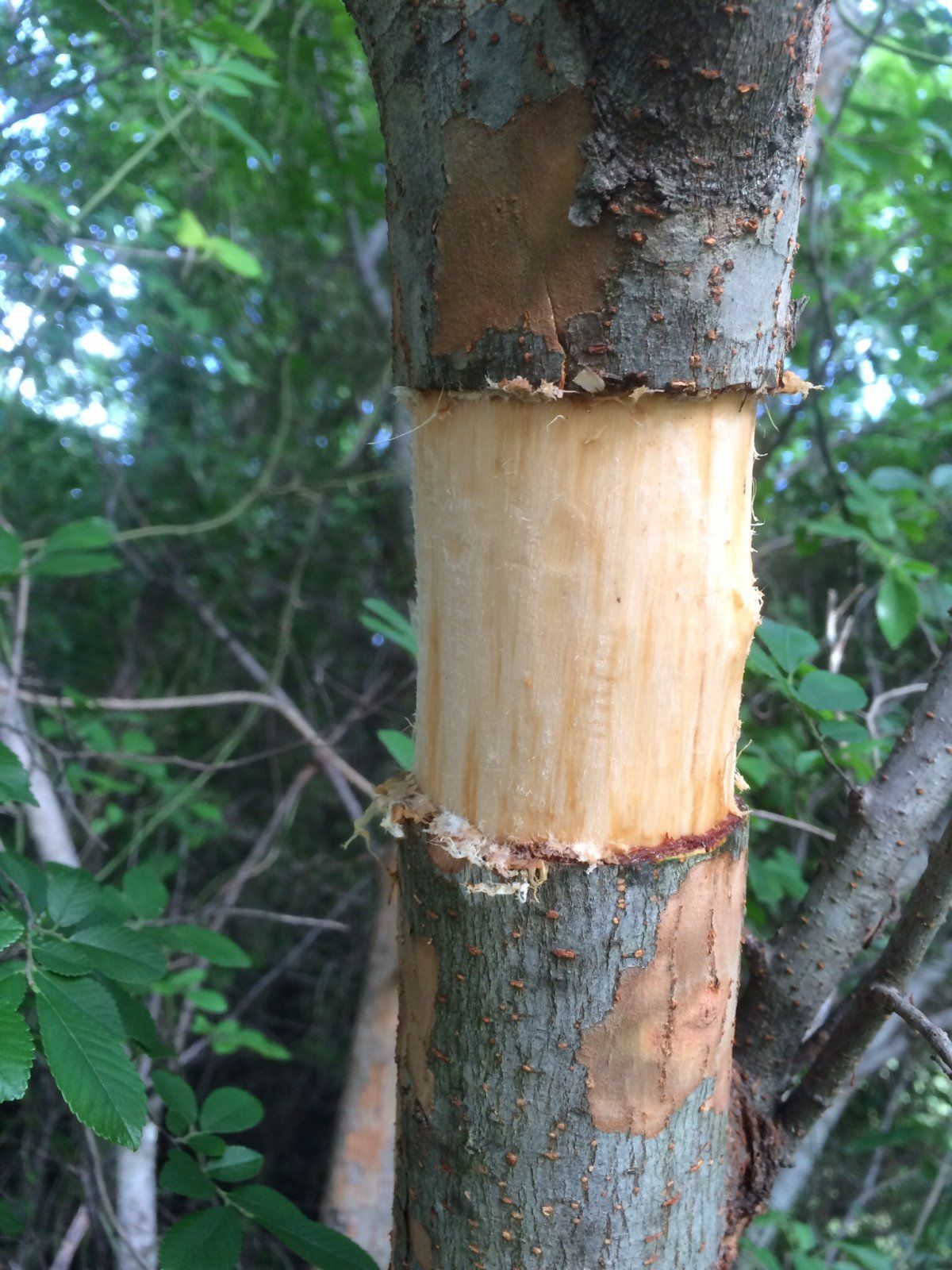To layer a tree, we interrupt the phloem (through which photosynthate is transported from the leafs) and cambium (through which biologically active auxin - aka 'rooting hormone' - is transported. There are two ways to accomplish this end:
- Girdle the stem, meaning remove the bark and cambium (leaving the wood) OR
- Apply a tourniquette, meaning wrap a wire tightly around the stem - the phloem and cambium is interrutped as the stem thickens.
With girdling, one must take care to remove/kill all the cambium on the exposed wood; else the tissues that were removed will regrow and cause the layer to fail because of 'bridging'. Some people have recommended adding wire at the top of the girdle (on the top most bare wood) to compensate for hasty/sloppy/poor technique. One line of logic is that if a tourniquette alone works, then a tourniquette on the bare wood will prevent bridging - indeed it will, but so too will simply leaving the girdle exposed to the open air for a day or two or wiping it with (70%) isopropyl alcohol before covering it. The other line of belief is that bridging is caused by new roots that go straight down (this is falicious even though new roots do sometimes go straight down instead of radially outward); so the wire is applied on the bare wood at the top of the girdle to defect these roots outward, away from the stem.
But, there is absolutely no point in cutting a girdle and applying a wire tourniquette on the bark above the girdle - the girdle serves no purpose in this configuration. I certainly hope you are not paying for such quackery, Pattik.







